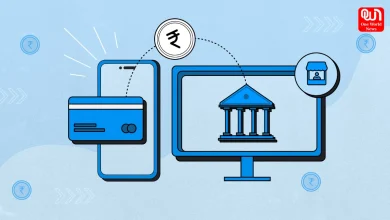Online Savings Accounts vs. Traditional Savings Accounts: Which is Right for You?
Savings accounts are vital to financial planning. While traditional banks have dominated the savings account space for decades, online-only banks now offer innovative digital banking solutions.
Online Savings Accounts vs. Traditional Savings Accounts: Which is Right for You?
Savings accounts are vital to financial planning. While traditional banks have dominated the savings account space for decades, online-only banks now offer innovative digital banking solutions.
This article compares online and traditional savings accounts across critical parameters to help you decide the right savings account option for your needs.
What is a Traditional Savings Account?
Brick-and-mortar banks offer traditional savings accounts with physical branches across locations.
These accounts allow essential banking services like cash deposits and withdrawals, cheque facility, bank statement generation and more, along with interest earnings on savings. Most traditional banks now offer net banking and mobile banking facilities for increased convenience.
What is an Online Savings Account?
As the name suggests, digital-only banks offer online savings accounts without traditional bank branches. Everything from account opening to transactions is handled digitally via web portals or mobile apps.
The easy online process, attractive interest rates, and lower fees are the hallmarks of online savings accounts. Opting for a savings account online provides greater flexibility and accessibility, allowing you to manage your finances from anywhere at any time.
Key Differences between Online and Traditional Savings Accounts
While online and traditional savings accounts fulfil the exact purpose of growing your money, there are some critical differences regarding operational aspects.
1. Interest Rates
Online savings accounts offer interest rates of 4-7% annually. This exceeds most traditional bank accounts’ 4.5% interest. Higher savings interest translates into higher earnings for you.
2. Accessibility and Convenience
Online savings accounts offer round-the-clock access from anywhere via mobile apps and web portals. Instant online transactions also make operating more convenient than visiting a physical bank. Additionally, many digital banks integrate features like Fast personal loans, allowing you to access funds quickly when needed.
Traditional accounts necessitate visiting the branch for cash/cheque transactions, though online channels are also available for convenience.
Read More: Beware of Vishing Scams: Protect Your Finances from Cybercrime
3. Fees
Online savings accounts have zero or minimal charges for most transactions and account maintenance. Traditional accounts may levy higher fees and minimum balance requirements. However, premium traditional accounts waive fees to maintain a high balance.
4. Security and Trust
Traditional banks offer robust security for your money coupled with the trust of a long-standing brand name. Online banks provide equally secure 256-bit encryption and funds protection in escrow accounts. Being tech-savvy, online banks also have advanced fraud analytics in place.
5. Customer Service
You can instantly connect with customer care executives by phone or chat in case of any query or issue with your online savings account.
Visiting a traditional bank branch allows for in-person interactions and advice from the staff. So, both channels have their pros and cons.
Which One is Right for You?
Here are the key factors to consider when deciding between an online savings account and a traditional savings account:
1. Deciding Based on Financial Priorities
- Maximising Interest Earnings: An online savings account is likely the better option to grow your money with the highest interest rates.
- Valuing Personalised Guidance: If you prefer in-person financial advice and customer service, a traditional savings account better suits your needs.
2. Factor in Lifestyle Needs
- Tech-Savvy Customer: A digital savings account offers greater convenience for those who actively use online banking and want 24/7 account access.
- Frequent Branch Visitor: A traditional savings account is more accessible if you rely on in-branch transactions and face-to-face support.
3. Reviewing fees
- Retaining More of Your Money: Opting for an online savings account can help avoid multiple account fees, which may reduce your overall savings over time. Their zero or low charges allow you to keep more of your deposit money.
- Personalised Services for a Fee: Traditional savings accounts can provide good overall value if you are comfortable paying slightly higher routine account fees and service charges. This is in exchange for specialised in-branch services and financial advice from banker staff.
Conclusion
Whether online or traditional savings accounts work better depends more on your priorities. For instance, online accounts offer higher interest gains if you want to grow savings faster. However, traditional branch accounts may be more suitable for face-to-face banking or advice.
You should assess key parameters like convenience, affordability of charges, customer support levels, etc. This evaluation clarifies which option matches your regular banking needs and expectations. You could also open accounts across providers, mixing the best conveniences of digital and offline savings accounts per your needs.
We’re now on WhatsApp. Click to join.
Like this post?
Register at One World News to never miss out on videos, celeb interviews, and best reads.








